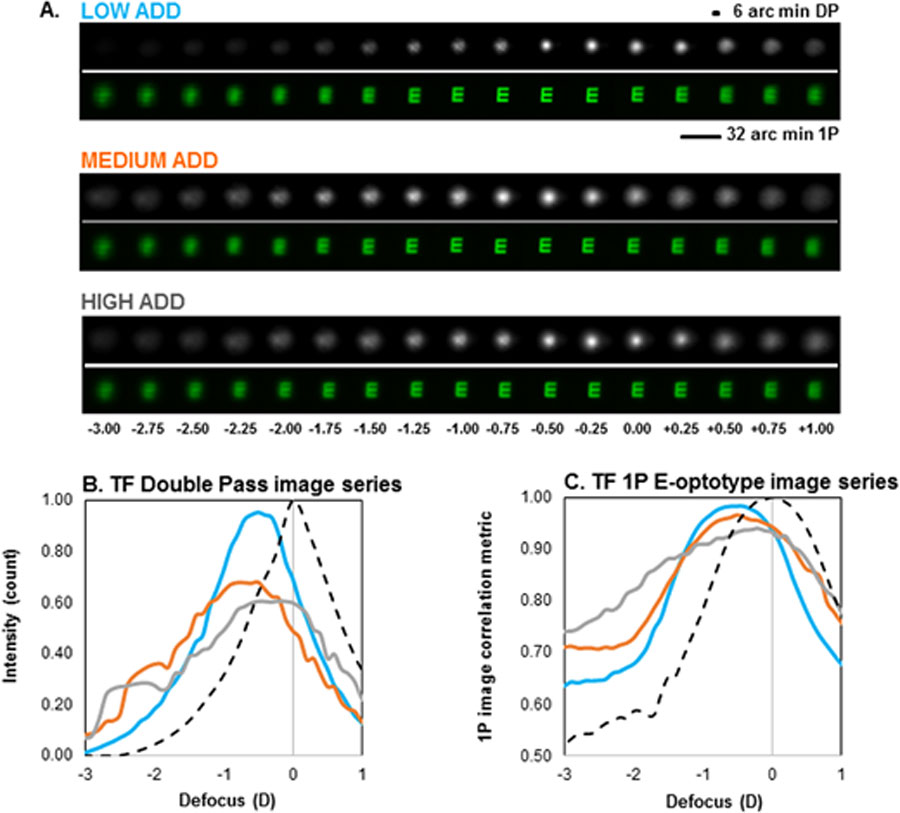Citation
Vinas M, Aissati S, Gonzalez-Ramos A, Romero M, Sawides L, Akondi V, Gambra E, Dorronsoro C, Karkkainen T, Nankivil D, Marcos M; Optical and Visual Quality With Physical and Visually Simulated Presbyopic Multifocal Contact Lenses. Trans. Vis. Sci. Tech. 2020;9(10):20. For more information, click here.
Abstract
Purpose
As multifocal contact lenses (MCLs) expand as a solution for presbyopia correction, a better understanding of their optical and visual performance becomes essential. Also, providing subjects with the experience of multifocal vision before contact lens fitting becomes critical, both to systematically test different multifocal designs and to optimize selection in the clinic. In this study, we evaluated the ability of a simultaneous vision visual simulator (SimVis) to represent MCLs.
Methods
Through focus (TF) optical and visual quality with a center-near aspheric MCL (low, medium and high near adds) were measured using a multichannel polychromatic Adaptive Optics visual simulator equipped with double-pass, SimVis (temporal multiplexing), and psychophysical channels to allow measurements on-bench and in vivo. On bench TF optical quality of SimVis-simulated MCLs was obtained from double-pass (DP) images and images of an E-stimulus using artificial eyes. Ten presbyopic subjects were fitted with the MCL. Visual acuity (VA) and DP retinal images were measured TF in a 4.00 D range with the MCL on eye, and through SimVis simulations of the same MCLs on the same subjects.
Results
TF optical (on bench and in vivo) and visual (in vivo) quality measurements captured the expected broadening of the curves with increasing add. Root mean square difference between real and SimVis-simulated lens was 0.031/0.025 (low add), 0.025/0.015 (medium add), 0.019/0.011 (high add), for TF DP and TF LogMAR VA, respectively. A shape similarity metric shows high statistical values (lag κ = 0), rho = 0.811/0.895 (low add), 0.792/0.944 (medium add), and 0.861/0.915 (high add) for TF DP/LogMAR VA, respectively.
Conclusions
MCLs theoretically and effectively expand the depth of focus. A novel simulator, SimVis, captured the through-focus optical and visual performance of the MCL in most of the subjects. Visual simulators allow subjects to experience vision with multifocal lenses prior to testing them on-eye.
Translational Relevance
Simultaneous visual simulators allow subjects to experience multifocal vision non-invasively. We demonstrated equivalency between real multifocal contact lenses and SimVis-simulated lenses. The results suggest that SimVis is a suitable technique to aid selection of presbyopic corrections in the contactology practice.

